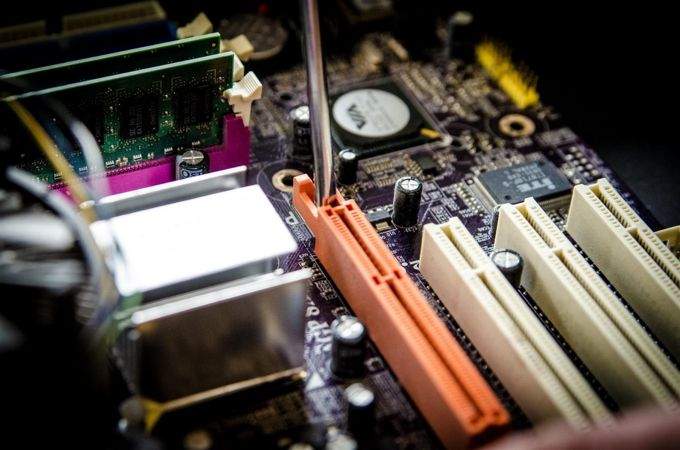The world of technology is changing so quickly, that the daily tech skills you learned just ten years ago are probably irrelevant today. If you were an adult in the 80s, computer skills weren’t nearly as important as they are now. That generation of 30-something adults are now hitting retirement age and if they haven’t consciously kept up to date, modern technology can be quite intimidating.
From smartphones to smart TVs, it’s a lot to take in all at once. It often falls to the younger generation to help their elders use and enjoy the benefits of modern tech. We have quite a lot of experience providing help and instruction to people of all ages. That experience has provided a number of key lessons when it comes to dealing with elderly users.

If you’ve got users in your life who fall into that category, these general tips will help make the process of teaching technology much easier.
Never Condescend
Never judge someone for not knowing something about technology. There’s a long list of things any given person knows nothing about and someone who isn’t tech-savvy doesn’t deserve to be talked down to.
Always have patience and respect for the person who you’re helping. If either party gets frustrated, take a time-out and try again after a few minutes. Listen to the person to understand where they’re coming from, don’t simply wait for your turn to speak.
Take Existing Knowledge Into Account

Each user you’re trying to help isn’t a blank slate! Take the time to get a handle on what your user already knows. Older users may actually have technical knowledge that’s out of date, but can still be built upon.
So take the time to assess what level and type of knowledge someone has and adapt your instruction to match it.
Be Aware Of Physical Limitations
Many older users have problems with their eyesight, hearing, dexterity and even the speed with which they can follow instructions. Be open about this and ask that you be told of any issues such as these coming to the fore.

Using accessibility features such as a screen magnifier or voice controls can be a part of your lesson. Older users might be dissuaded because of these problems and be unaware of the many features modern devices have to compensate for them.
Explain Yourself
Don’t assume that the person you’re trying to help isn’t smart enough to understand what’s going on under the hood. If you explain it well enough, it’s possible to help anyone understand how something works in principle.
So don’t dismiss questions about the technology itself or give needlessly simple answers. If understanding the nature of a particular technology will help the person use a device or application better, proactively include those explanations.
Chill With The Jargon
Jargon is a good tool for knowledgeable people in a field to efficiently talk to each other, but it’s also a major barrier to entry for anyone who isn’t already an insider.

In practical terms this means you should not use jargon tech terms unless absolutely necessary. Instead explain things in common parlance, using terms that most people would know.
Encourage a Hands-On Approach
As far as possible, you should let the person you’re trying to teach do everything themselves. Resist the urge to take over, even as a demonstration. Instead, have them act out your instructions using their own hands.
There’s an ocean of difference between passively watching someone do something and doing it yourself. So give them every opportunity to get hands-on time.

Focus On Building Confidence
Fear is a major factor when dealing with technology. In turn, fear is driven by the unknown. If you don’t understand something, it’s easy to find it scary.
So while direct and clear instruction is still very important, if you want older users to really “get” the technology you’re trying to explain to them, it’s important to replace fear with confidence.
You should make it clear that you can’t “break” something just by using it. As long as someone’s crucial information is backed up or safely in the cloud, the worst that can happen is having to reset something.
The best way to learn a specific piece of tech is to play with it freely. Making mistakes is an important part of learning and modern devices are pretty foolproof. So make a point of allaying these worries and encouraging the person to explore freely.
Teach Them To Fish With a Problem-Solving Mindset

One of the biggest mistakes you can make when teaching someone about technology, is to have them memorize a rote set of instructions in order to accomplish a specific task. Why? Because as soon as something off-script happens, the user needs to get someone to help them.
Instead, it’s better to instill a problem-solving attitude when it comes to technology. If they encounter an error or something happens that wasn’t covered in the instructions, encourage a Google search and independent attempts at fixing the issue before calling for help.
Always Keep it Relevant!
Adult education, referred to as andragogy, has a big cardinal rule – keep it relevant.
Adults learners value their time and want to know what the practical application of a piece of knowledge is. So, unless the individual is interested in the technology for its own sake, you’ll get much better results by always framing information in terms of its relevance and usefulness.
No One Is Too Old To Learn
The stereotype of older people being unable to learn anything about new technology is a complete myth. We know plenty of people who were at retirement age when they learned skills like coding or desktop support.
Which means you have to park your prejudices when helping older users get to grips with new technology. After all, how would you like to be treated if the roles were reversed?